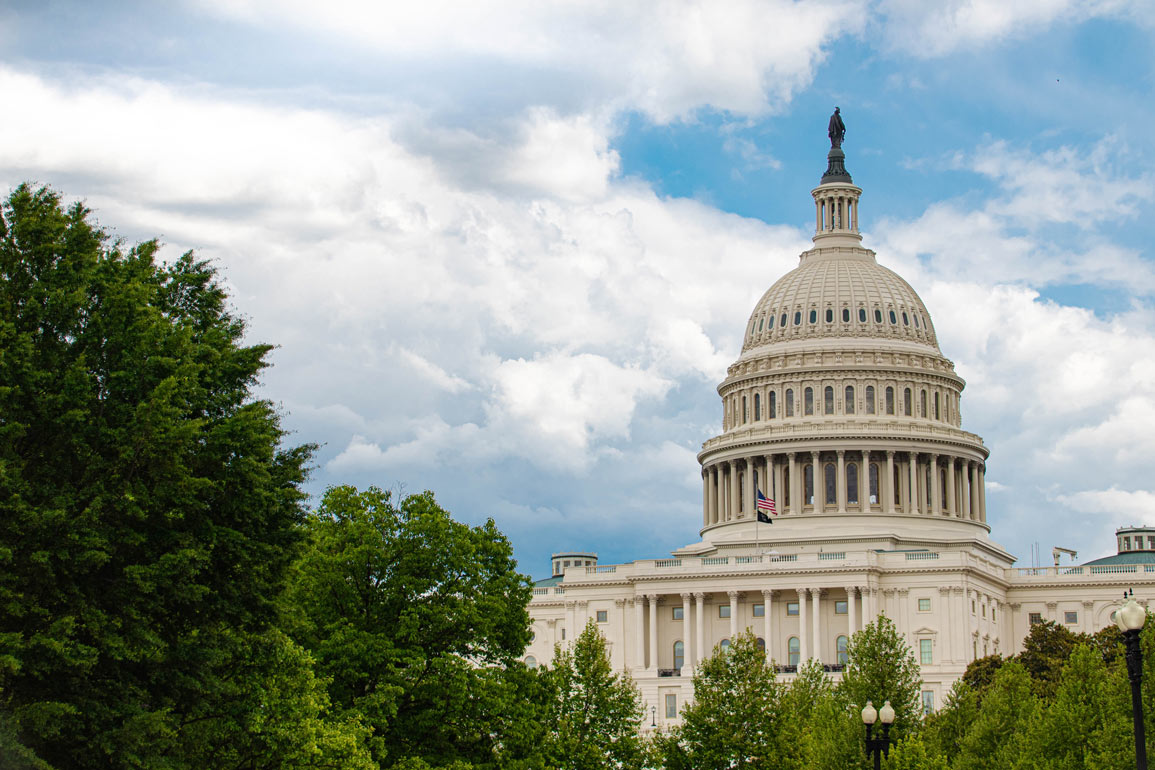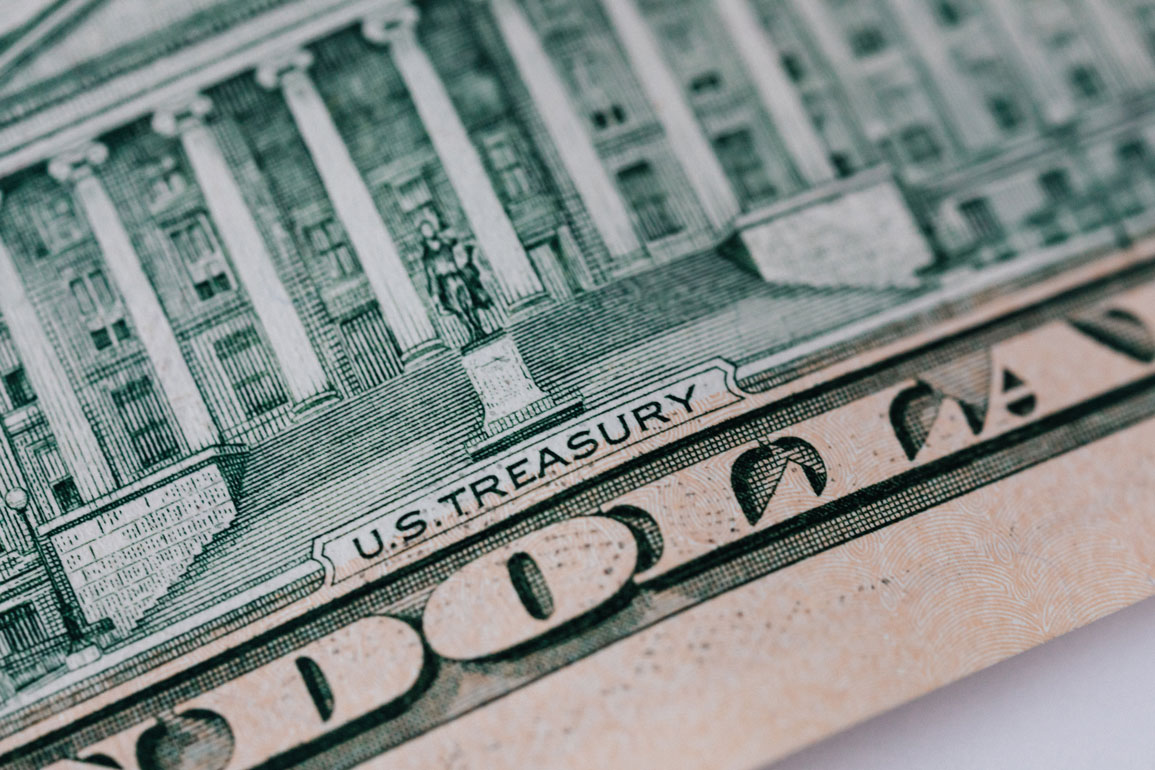The US debt ceiling impasse
The lack of an agreement within the US government to raise the country’s debt ceiling has been dominating the news lately and causing concern in the financial markets.

The major news story that is currently causing uncertainty in the financial markets centres around the lack of an agreement within the US government to raise the country’s debt ceiling. Essentially, the amount of cash available to the US to pay its bills and other obligations is running out. This is not an unusual situation—negotiations over the debt ceiling come to the forefront every now and then, and are typically marked by political maneuvering, many hastily-convened meetings, and a race to the deadline before funds are depleted.
At ATBIM, we believe the risk of an actual default is extremely low based on both history and the fact that it does not benefit anyone, especially politicians, to endanger the “full faith and credit of the United States.”1 Here, we look at how this happened, what the potential implications are, and how we at ATBIM expect the situation to play out.
What is happening?
In order for the US Treasury to make payments—whether that’s paying government salaries, interest on bonds/debt, etc.—funds need to be made available. These funds are sourced from cash inlays from tax receipts, other government revenues, or through raising money via debt issuance. In an ideal world, revenues would be able to cover all outlays. However, that is rare in most government entities, especially the US federal government, and therefore they must rely on debt issuance to make up the difference.

Currently, the US has a limit on the amount of federal debt the US Treasury is able to issue, and this is imposed by Congress. This “debt ceiling” currently stands at $31.4 trillion USD, and this amount was projected to have been reached as of January 19, 20231. This has resulted in the US Treasury implementing extraordinary measures. These measures, which include the suspension of subsequent investment in government retirement and benefit plans, are the US Treasury’s way of shifting money around in order to remain current on their outstanding obligations.
As these measures are extraordinary in nature, they are not meant to be a long-term solution, and the US Treasury will run out of funds to maneuver. US Treasury secretary, Janet Yellen, has advised Congress that this day—called the “x-date”—will likely be early June, possibly June 12. Government receipts and payments are variable, which makes it difficult to pinpoint the exact x-date, leading to some analysts, such as those from Goldman Sachs, estimating this date to be around June 93.
Potential scenarios
Without congressional action to raise the debt ceiling, the US Treasury will have no choice but to default on their outstanding obligations. The implications of a default is expected to cause wild speculation, which could lead to major market turmoil at the very least, followed by economic turbulence. The last time congressional drama surrounding the debt ceiling unfolded was in 2011, which led to one of the major fixed income rating agencies, S&P, downgrading the US from AAA to AA+. This time around another major rating agency, Fitch, has placed the US on watch for a potential credit downgrade as a result of the uncertainty leading up to the deadline.
While the solution is to raise the debt ceiling, doing so without concessions has been met with fierce opposition from the Republican party, which currently controls the House of Representatives. In the majority of previous cases where the ceiling needed to be raised, Congress acted without issue as one of the two parties (Republican or Democratic) controlled both the legislative branch (Congress) and the executive branch (the presidency). In other situations, a timely bipartisan agreement was made to raise the ceiling. The last time similar debt ceiling drama unfolded was in 2011 when a deal was made to extend the debt limit at the last minute. It is likely that the same will happen this time, but not without further political grandstanding. Headlines will continue to be dominated by trivial statements from leaders and participants from both parties until a deal is actually made.
Markets in general expect governments to be stable, reliable, and predictable. This is even more true for the US as their treasuries are generally regarded as the real-world “risk-free” asset. The drama surrounding the debt ceiling has certainly caused volatility in markets. The VIX index, which is a measure of US equity volatility, has increased by approximately 25% since May 18 (moving from a value of 16 to just over 20). The effect can also be seen in US treasuries, particularly Treasury Bills maturing in early June, with some notes yielding more than 6.7%. It is not that the market expects the US to default—if that were the case, we would see a far more severe response from markets—but rather the markets are behaving in a jittery manner and voicing their displeasure with the dysfunction in Washington.

Without congressional approval, President Biden’s administration is left with few options to deal with the debt ceiling. Some argue that one extreme option is to invoke the 14th Amendment of the United States Constitution in which section 4 states that: “[t]he validity of the public debt of the United States, authorized by law[…] shall not be questioned”. This can be interpreted to mean that default causing debt ceilings can be viewed as unconstitutional. Invoking such an option would likely cause even more political turmoil, and will certainly bring lawsuits questioning the validity of the claims. Other, less extreme, options include a short extension of the debt ceiling to give more time for a deal to be brokered for a larger debt ceiling increase.
The impact to our funds
The bottom line is that the drama surrounding the debt ceiling is nothing more than political grandstanding that is likely to be resolved in short order. No-one stands to gain from the US defaulting on its debt, least of all the politicians themselves, who benefit personally and professionally when the US is well perceived globally. At the end of the day we’re likely to see a last minute deal, whether it's a short-term extension or a proper increase of the debt ceiling.
Given our expectation that this impasse will be resolved, we see no reason to change our current positioning or long-term outlook on US investment opportunities. The largest impact on a month-to-date basis has been concentrated in rising government bond yields, whereas credit risk, as measured by corporate bond spreads, have remained steady. A higher allocation towards corporate bonds combined with a lower sensitivity to rising interest rates from the funds’ lower duration, positions us well to weather the volatility in fixed income markets.
While market uncertainty can be uncomfortable, it is important to sit tight and disregard the short term jitters caused by this political sabre-rattling. We like the analogy used by PIMCO Canada Corp. that “passing the debt ceiling feels like passing a kidney stone—we know it will pass, it is just a question of how painful it will be.”
Disclosure
ATB Investment Management Inc. (ATBIM) is registered as a portfolio manager across various Canadian securities commissions with the Alberta Securities Commission (ASC) being its principal regulator. ATBIM is also registered as an investment fund manager and manages the Compass Portfolios and the ATBIS Pools. ATBIM is a wholly owned subsidiary of ATB Financial and is a licensed user of the registered trademark ATB Wealth.
This site is for persons in Canada only. Investment funds managed by ATBIM are only qualified for sale in the provinces and territories of Canada, excluding Quebec and Nunavut. This website is not, and should not be construed as, an offer to sell or a solicitation of an offer to buy any investment.
None of the ATB companies are responsible, nor liable, for any damages whatsoever caused (including direct, indirect, incidental, special, consequential, exemplary or punitive damages) arising out of, or in connection with, the websites or the information, or your ability or inability to access or use the websites or the information, or any action or decision made by you in reliance on the websites or the information, or any errors in or omissions from the websites or the information, or any unauthorized use or reproduction of the websites, of the information, even if an ATB company has been advised of the possibility of these damages.
Commissions, trailing commissions, management fees and expenses all may be associated with mutual fund investments. Please read the prospectus before investing. Mutual funds are not guaranteed, their values change frequently and past performance may not be repeated.
Mutual fund securities are not covered by the Canada Deposit Insurance Corporation or by any other government deposit insurer. There can be no assurances that the fund will be able to maintain its net asset value per security at a constant amount or that the full amount of your investment in the fund will be returned to you. Past performance may not be repeated.
